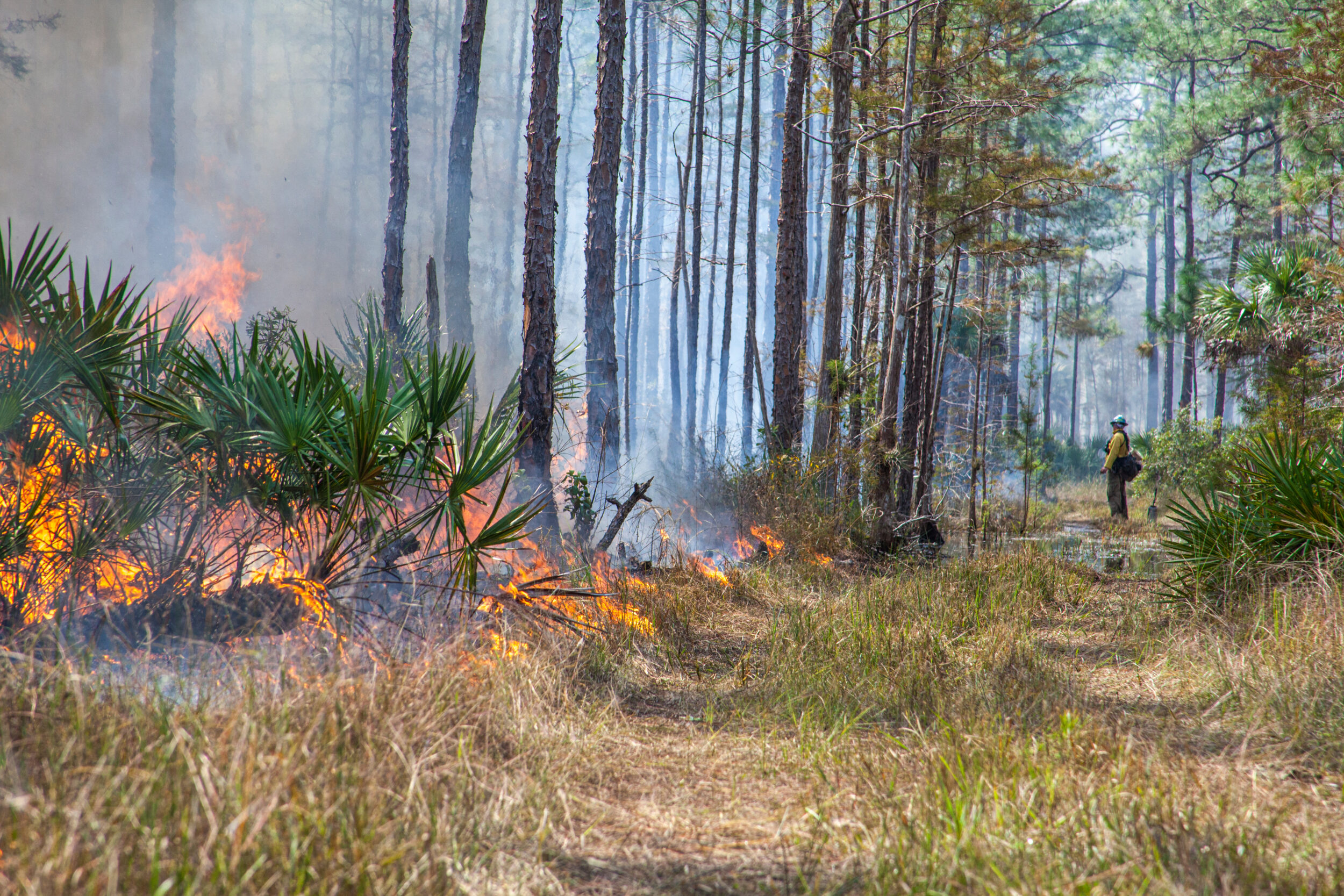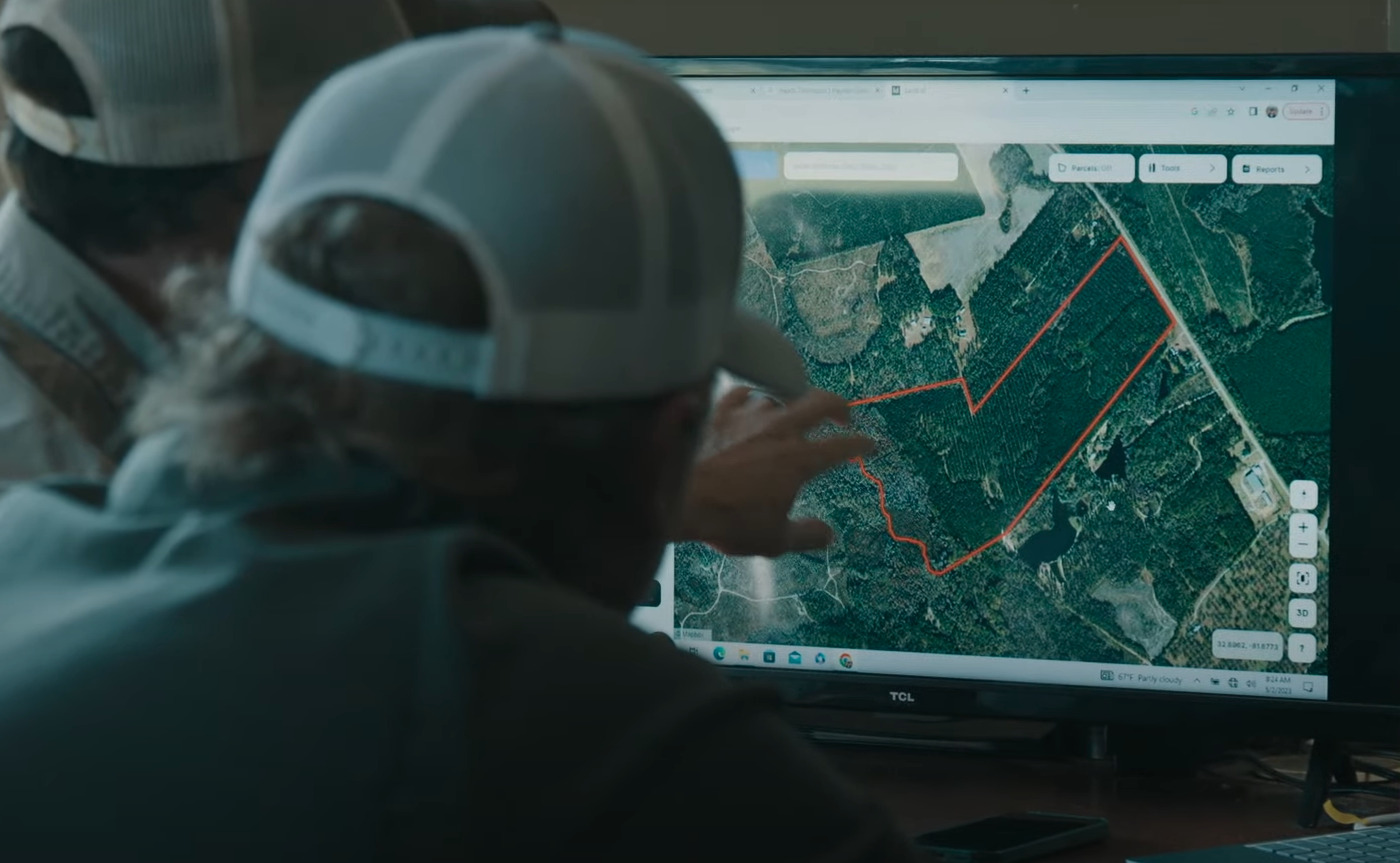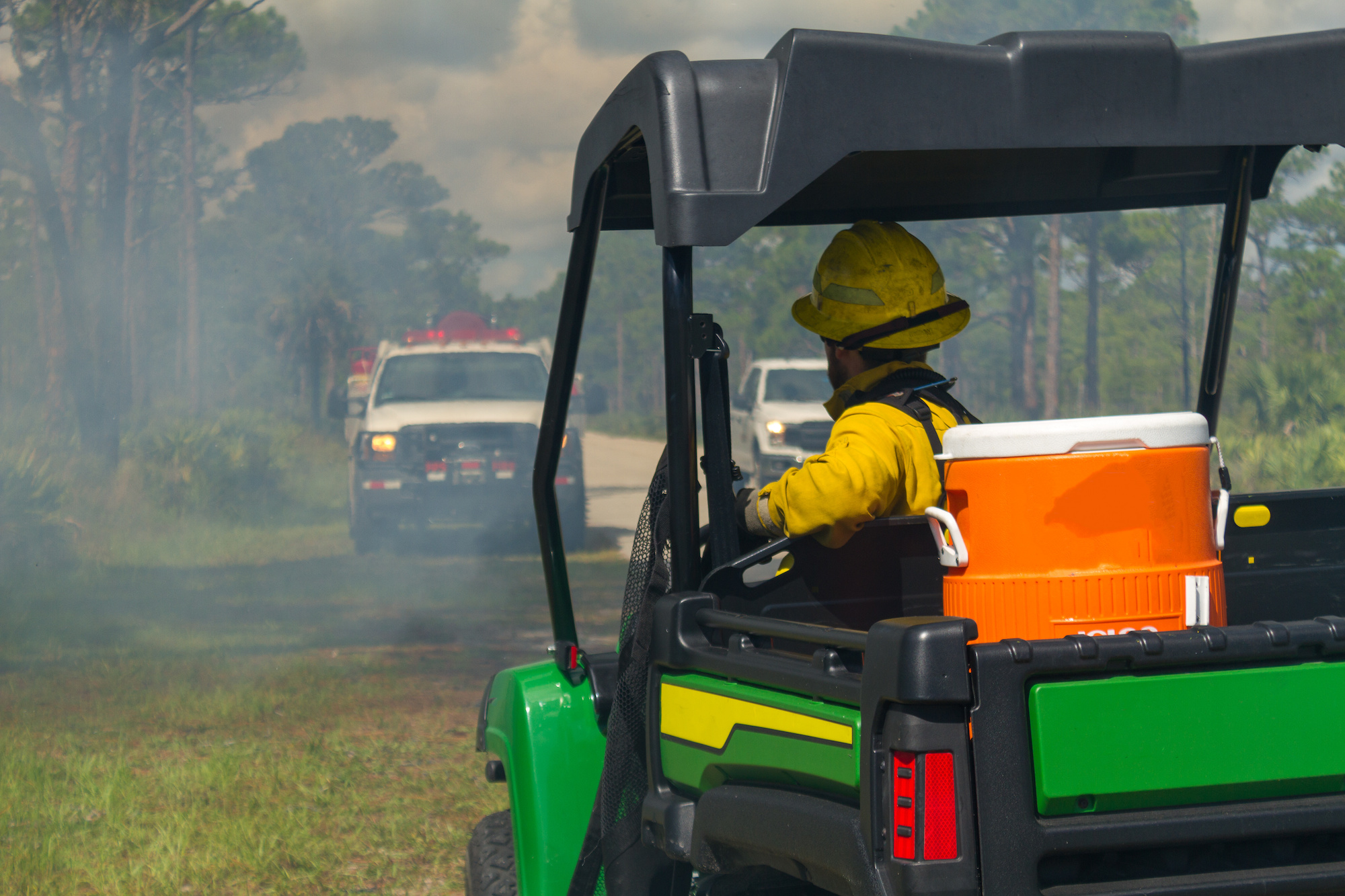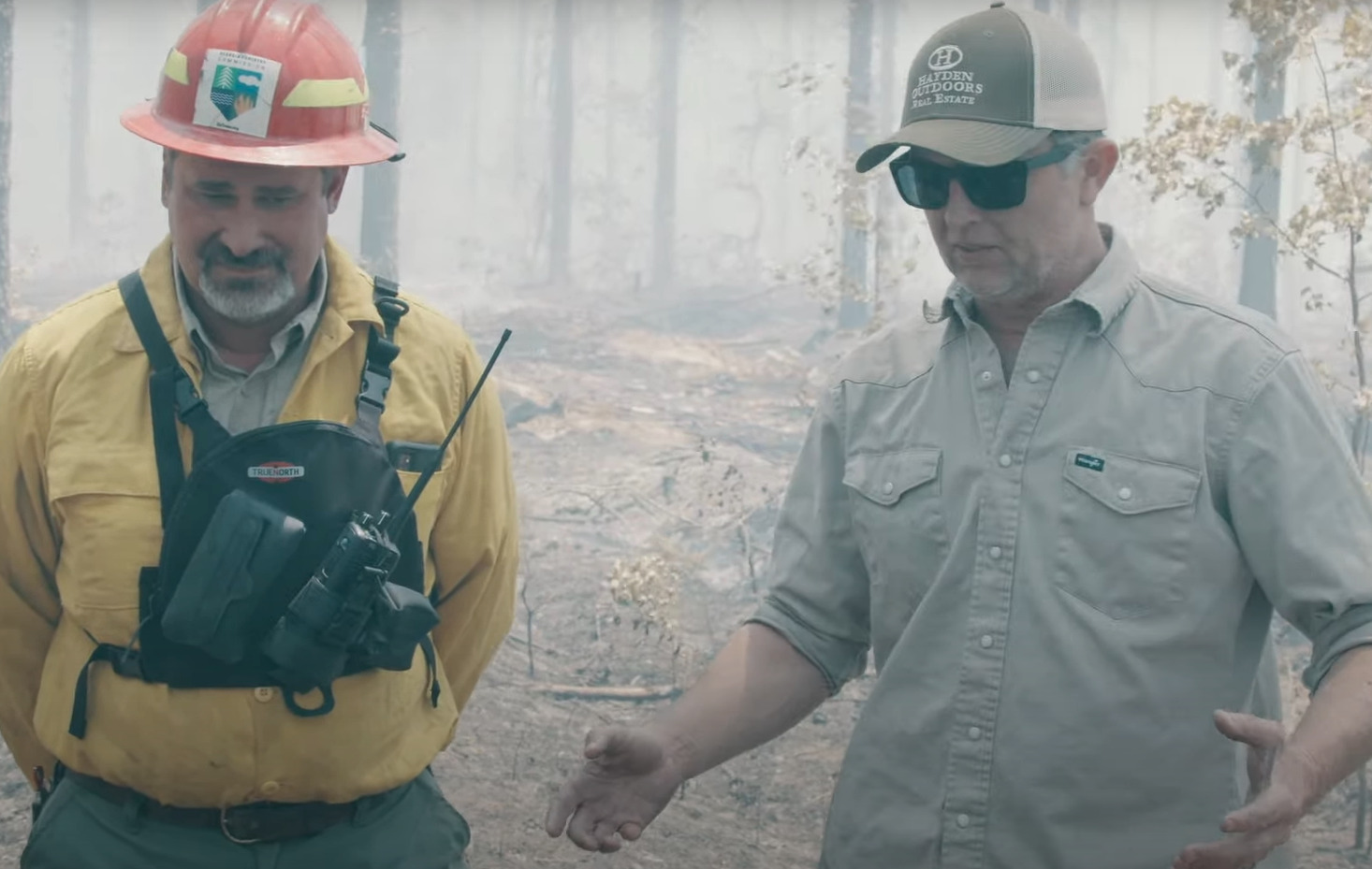
Sign in
Sign in to save favorite properties and equipment, save your search parameters and more
Don’t have an account yet? Sign Up Now
Sign up
Already have an account? Login Now


Sign in
Sign in to save favorite properties and equipment, save your search parameters and more
Don’t have an account yet? Sign Up Now
Sign up
Already have an account? Login Now
Safe, controlled prescribed spring burns are essential to proper ecosystem management on your property. Why is that? Dr. Bill Palmer points to Mother Nature’s long established natural rhythms. The forestry expert and CEO of Tall Timbers notes, “The benefits of prescribed burning are many. Most ecosystems evolved with fire post glaciation. Burning helps improve primary productivity, insect diversity, food availability for foraging creatures, butterfly nectar production, flowering plants, carbon sequestration, clearing out the underbrow undergrowth, and finally, just reducing fuel loads to avoid the occasional wildfire that can wreak havoc on timber values and structures. The benefits are outweighed by any other management techniques.”
Hayden Outdoors recreational real estate expert, Heath Thompson echoes these thoughts on prescribed burning, “There is no greater tool in the land management bag than prescribed burning.”
Prescribed burns, sometimes referred to as controlled burns, are just that – a calculated, strategic application of fire to land. In a good portion of the Southeast, February through mid-May is known as prime time burning. Whether you establish a new pattern, or you’ve done prescribed burns for decades, Bill offers his insight into their benefits. “Bottom line, you’re going to improve pretty much every metric you can imagine.”

The United States Forest Services defines a prescribed fire as a planned fire used to meet management objectives. While the USFS manages large burns and prescribed fires, property owners can do the same, along with implementing other wildfire protection measures, to achieve similar ecosystem benefits on their land. These fires differ from uncontrolled fires by the strategy behind when, where, and how big they are allowed to burn. Bill puts a finer point on it, “Prescribed burns are kept at a minimum and that’s why it’s called a prescribed burn, because it’s under a prescription requiring certain conditions, a permit, and preparation.” Follow those guidelines and your prescribed burn can be an extremely safe practice.
It might seem like a harsh idea – intentionally igniting your land on fire. But the reality is, prescribed burns are a very practical way to facilitate natural rejuvenation and reforestation. “More frequent fires drive the ecosystem to generate a mix of grass, weeds or forbes, shrubs, and vines. That mix is needed for a lot of bird species, insect species, and rodents that are essential to a healthy food chain.”
It’s important to think of planning your prescribed burn in two ways – legal considerations and weather conditions. Let’s break down both.
First, legal considerations. For those with little to no experience, it’s important to start your process with your local forest authorities. These agencies typically include the United States Forest Service (USFS), the NRCS (Natural Resources Conservation Service), and the DNRC (Department of Natural Resources and Conservation). Starting with your local forestry agency provides the proper pathway to securing the correct permits and following all necessary regulations.
Once you’ve talked to relevant agencies, look to your neighbors. Often, neighbors will get together and combine expertise, equipment, and efforts. And make sure you have all the appropriate certifications when applicable. “You want to make sure you check the box on certification that you’ve had the property training. So, if you imagine you’re getting into hunting for the first time, you’ve got to go through the training, get your license, buy your equipment, and then talk to the people who can teach you. Prescribed burns are similar – it’s a lot of common sense and once you’ve done it a few times, it gets easier and easier.”
Then there are weather conditions. The day you plan a prescribed burn is a day you want to pay very close attention to the weather. Bill notes the ideal weather ultimately depends on what your goal is. You want enough wind to push the fire to what it needs burn, but not so much that the fire gets out of control. Look for days when the wind is not forecasted to gust or shift. A little humidity is good for fire control, but too much humidity or a super cloudy day can cause a fire to smolder and smoke.

Preparation is key to a successful prescribed burn. Once you’ve talked with your local forestry agencies, secured the proper permits, taken any necessary courses, and done a weather check, it’s important to make sure you have everything you need for the day you plan to burn. Here are a few essentials to consider before you start your prescribed burn:
Heath emphasizes the importance of holistic safety measures: “A burn plan, permit from the forestry commission, proper firebreaks, knowledge of humidity and wind direction/wind speed.”

The best time of year to do a controlled burn in your area will depend on seasonal factors, such as how long the days are, day- and night-time temperatures, and weather. On the day you plan to burn, make sure you start early enough in the day to maximize daylight should something go wrong or the burn (and extinguishing it) requires more time than expected.
Seasonal factors are another consideration. Spring is the optimum time to burn in the Southeast, when wind and humidity allow for effective and efficient burning. That might not be the case in your region. Some Western states require there to be snow on the ground before initiating a burn. Check with your local forestry agencies to determine the best time of year and the best time of day to initiate a prescribed burn in your area.
Regarding any appropriate equipment you might need, Bill points to specifics in two scenarios. “If you have a pine stand surrounded by a pasture, you probably don’t need anything other than a four-wheeler, burn pot, and water tank to put out snags. A fire won’t burn across a crop field. But if you’re burning a pocosin that has not been burned for 15 years, it might put up 60-foot flames. Then you need your dozers and heavy equipment, including a tractor with a disc and a big type-two engine with water tanks to be prepared because if that fire gets out of control, it’s going to burn intensely.”
You should also consider doing some backburning before igniting the main prescribed fire. A backburn is a smaller fire intentionally lit along a fire’s desired boundary. It burns out and eliminates the fuel between the prescribed fire and the firebreak essentially suppressing the fire.
Heath talked with experts about prescribed burns in January 2024 on Season 5 of Life on the Land
The number of people required to safely monitor and control a prescribed burn obviously depends on the type of fuel and size of the property. “A 50-acre burn can easily be pulled off by one or two people depending on the fuel situation. If you’re doing a 500-acre burn, you may need more like eight to ten people.”
Assess the size of the fire and how many hands on deck you feel you’ll need to keep it controlled before you begin. If you’re burning a larger property that hasn’t been maintained by prescribed burning over the years, talk with your local forest agencies and organizations to see if you need to involve any trained personnel. Once you’ve established your team, make sure everyone understands their roles and responsibilities
Throughout the burn, do regular assessments of its effectiveness and to ensure it’s not getting out of control. Adapt your burn plan as needed as the burn progresses, all the while keeping in mind that prescribed burning is typically a very safe and effective practice. Bill points out, “Roughly 99.7% of all burns stay within boundary. Most of the fires that jump the line are quickly contained. In the Southeast, escapes that cause damage are very, very rare.”
Bill can not underscore enough the benefits of controlled burning on your property. “You pretty much have to be paying no attention at all to miss the ecological benefits and how burns improve the value of land. Realtors tell us there’s a substantial increase in the value of frequently burned land versus land that goes unmanaged.”
Heath agrees, “It will increase the browse by several times over. In some cases in southern pine stands it will completely change the property. A pine plantation in which the entire forest floor is covered in pine straw – straw is a desert for wildlife. By burning, and with some sunlight, the native plants like greenbrier and partridge pea will take off along with tons of other small leafy plants and create a salad bar, so to speak, for deer and small game.”
So in the days and weeks following your burn, pay attention to the land and how it reacts. More grasses and forbs typically shoot up after a burn. As Bill points out, in the Southeast, each successive burn keeps driving the ecosystem toward a pine-savannah, which was very normal in the region centuries ago. “As you drive the system toward a better and better habitat, you’re going to have more and more critters in that habitat.” It is important to plan for wildlife when you put together your prescribed burn strategy. Consider how long it will take the land to recover before animals can come back to it, including what type of nesting cover birds need. Animals and insects will typically inhabit burned areas again very quickly due to all of the free food (easily accessible seeds, nuts, and pollens) these burns generate.
As you walk your regenerating land, consider if the controlled burn met your goals. Learn from the experience and make sure to apply any teachings to future controlled burn plans.

Controlled burns need to be a group effort, at least from a communications standpoint. This also offers an excellent opportunity to educate those around you about the benefits of regular prescribed burns. When informing your neighbors about your own controlled burn, talk with them about your safety plan, communication strategy, and address any of their concerns. You can even offer to help them with their burn next time around in an effort to increase the overall health and wellbeing of the surrounding area.
Look to your neighbors and your community for opportunities to workshop, connect, and reach out to others regarding the practice. If these resources don’t already exist in your neighborhood, consider establishing them yourself.
If you’re still wondering about the effectiveness of prescribed burning, consider this wild wildfire fact Bill imparted, “There’s more prescribed burning done in three states in the Southeast than all Western wildfires combined – three million acres per year, 84% of that on private land.”
In other words, prescribed burning is especially important where it can be done safely and effectively on a regular basis. Don’t forget to talk with your local forestry agency about best practices in your region, and secure the appropriate permits, help, and equipment before you begin. The more regularly you burn, the easier it becomes and the healthier the land is. When we asked Bill if prescribed burning becomes safer the more frequently you do it, he was unequivocal, “Absolutely, 100%, no doubt about it.”
Make this the year you establish your own prescribed burning strategy. Vastly improve the health and quality of your property for years to come.